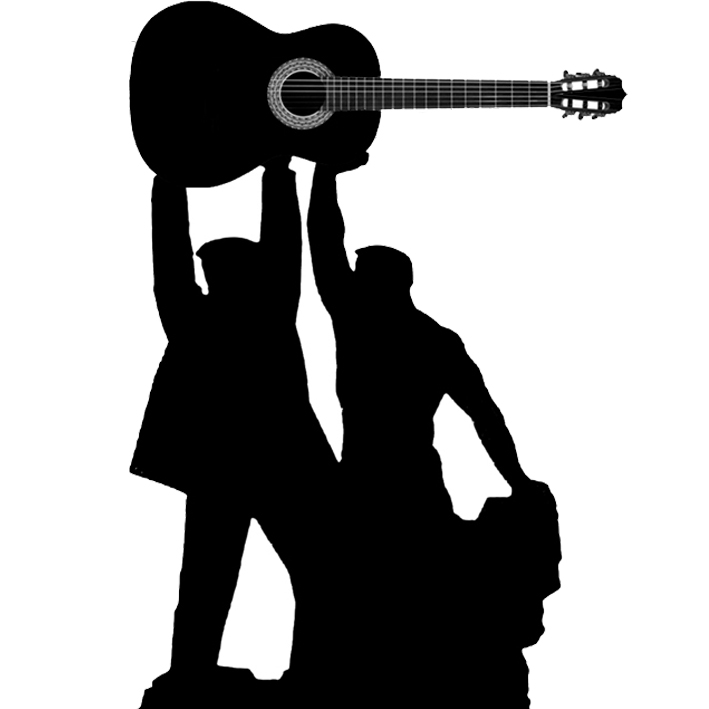If you’re like me, a rock/pop/blues/jazz/soul/r&b etc. musician living in America, you almost never hear about ‘texture’ in your daily musical life. But chances are, you make decisions having to do with texture all the time in your music, without even being aware of it. By learning a little about what texture is and how it serves music, you can be more conscious in your choices of music you are writing, performing, or even just enjoying.
In simple terms, texture means how many instruments are playing at any given time, and how they are relating to each other. A “thick” texture is when there is a lot of “stuff” going on at once. This could mean anything from how many different instruments are playing, to how many of the same instrument there is, to the actual sound (called “timbre” pronounced “tamber”) of the instruments being played, to the types of rhythms each instrument is playing, or even the tempo of the particular passage.
There are 3 main types of texture.
- Monophonic – one melodic line (sometimes called a ‘voice’ even if it’s not being sung) with no accompaniment
- Polyphonic – multiple melodic lines moving at the same time. They may interact with each other but are independent from each other (often called “counterpoint.”) This is often heard in Baroque style music.)
- Homophonic - there are multiple instruments, but one voice stands out prominently. This is the most common type of texture in Western music. In pop music, the prominent ‘voice’ is the singer’s.
There are other types of texture (such as biphonic in which one instrument plays against a drone as in Indian music), but these are the main 3 types. On even a superficial level, one can see that since homophonic texture tends to dominate Western music, perhaps a little knowledge of the other 2 types can come in handy in certain situations. For example, have you ever heard “Mercedes Benz” by Janis Joplin? It’s just her voice (not including the sound of her foot tapping) – so I would call that a very successful monophonic recording. https://www.youtube.com/watch?v=Qev-i9-VKlY
And polyphony can really add spice to your song at certain key points. There are thousands of examples but as long as we’re on the classic rock wave from Janis above, I’m reminded of Grace Slick and Marty Balin almost fighting, musically, for attention from the listener in their band Jefferson Airplane. Or how about this: Jimmy Page doing a guitar solo while Robert Plant does vocal scatting type of sounds in Led Zeppelin? I’m also reminded of Dixieland music where, for example, a trumpet, clarinet, and trombone all play independent lines from each other. I challenge you to find examples in the music you like.
But since homophonic texture is by far the most common, let’s explore that a bit as well. I once read that the 2 most common mistakes in mixing a recording are making the vocals too loud and not making them loud enough. There is a delicate balance between the prominent melody and all the supporting instruments in any song.
If you only take away one thing from your new knowledge about the fact that the music you are playing (most likely) is homophonic, it should be this: Always ask yourself “are all the other instruments that are accompanying the predominant melody playing parts that really support the emotional content of the lyrics and melody?” or “How can my instrumental part better support the overall feeling meant to be conveyed by the song?”
Just by asking this second question you may come up with a new approach, a new strum, new chords, a different sound for your instrument. By asking the first question you may decide to add a cello, or saxophone or some kind of instrument you don’t normally use, or dial in a sound you don’t normally use or play in a way you don’t normally play.
Notice that the questions about texture are questions and not answers. There are no rules, and the possibilities are literally endless. Notice also that the questions are focused on serving the emotion of the song. This is what connects to the listener. This is the purpose of music theory overall – to help you better appreciate and/or play music that connects with people.
Have fun with your new understanding of texture.
About the author: Dennis Winge is a professional guitarist living in New York with a passion for vegan food and bhakti yoga. If you are interested in taking Guitar Lessons in Ithaca, NY, then be sure to contact Dennis!
